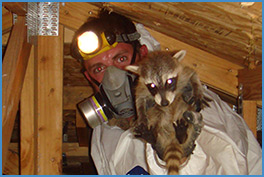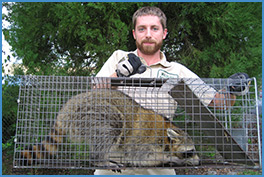Long Beach Pest Animal Removal: 213-233-9495
Pest Animal of Long Beach provides nuisance animal removal services in Long Beach, CA. We humanely solve conflicts between people and the wild animals of Long Beach California, including raccoons, squirrels, rats, snakes, birds, opossums, skunks, and more! We are a full-service nuisance wildlife control company
servicing the greater Long Beach region. We provide both residential and commercial services, and are fully licensed and insured in California. In solving pest animal conflicts, we utilize a full array of services, from humane trapping and relocation, to critter prevention and damage
repairs, to dead animal removal, attic cleanup, and more. We offer competitive pricing and the best service in Long Beach. Every situation is different, so give us a call at 213-233-9495 now to discuss your wild animal problem, and get a price quote over the phone. We
answer our phones 24-7-365, work on weekends, and can usually schedule a same-day or next-day appointment to solve your pest animal problem!
Long Beach RACCOON CONTROL: Call us now for raccoon removal in Long Beach, CA.
Visit the How to get rid of raccoons page to learn how to do it yourself.
To find out our prices for raccoon control, visit our raccoon removal prices page.
Long Beach SQUIRREL CONTROL: Call us now for squirrel removal in Long Beach, CA.
Visit the How to get rid of squirrels page to learn how to do it yourself.
To find out our prices for squirrel control, visit our squirrel removal prices page.
Long Beach SKUNK CONTROL: Call us now for skunk removal in Long Beach, CA.
Visit the How to get rid of skunks page to learn how to do it yourself.
To find out our prices for skunk control, visit our skunk removal prices page.
Long Beach RAT CONTROL: Call us now for rat removal in Long Beach, CA.
Visit the How to get rid of rats page to learn how to do it yourself.
To find out our prices for rat control, visit our rat removal prices page.
Long Beach MOUSE CONTROL: Call us now for mouse removal in Long Beach, CA.
Visit the How to get rid of mice page to learn how to do it yourself.
To find out our prices for mouse control, visit our mouse removal prices page.
Long Beach BAT CONTROL: Call us now for bat removal in Long Beach, CA.
Visit the How to get rid of bats page to learn how to do it yourself.
To find out our prices for bat control, visit our bat removal prices page.
Long Beach SNAKE CONTROL: Call us now for snake removal in Long Beach, CA.
Visit the How to get rid of snakes page to learn how to do it yourself.
To find out our prices for snake control, visit our snake removal prices page.
Long Beach BIRD CONTROL: Call us now for bird removal in Long Beach, CA.
Visit the How to get rid of birds page to learn how to do it yourself.
To find out our prices for bird control, visit our bird removal prices page.
Long Beach WILDLIFE CONTROL: Call us now for wildlife removal in Long Beach, CA.
We handle all wildlife, such as opossums, groundhogs, armadillos, moles, fox, coyote, and more.
To find out our prices for wildlife control, visit our wildlife removal prices page.
Other Resources for FREE Sity Animal Removal:
Los Angeles County Animal Services: 310-559-5900
Animal Advocates Wildlife Rehabilitation Wildlife Rehabilitators: 310-877-4770 www.animaladvocates.us/
California Wildlife Commission: (916) 653-4899 http://www.fgc.ca.gov/
Long Beach Police Department: (213) 486-1000
Long Beach Wildlife Tip: About Mole: Diet: Mole feeds on smaller insects, as well as shrews, earthworms, mice, and centipedes. The animal is able to catch preys such as earthworm by releasing poisonous saliva that is capable of paralyzing the prey. Moles are not choosy like some other mammals when it comes to feeding, therefore they can consume both living and dead animals such as earthworm and mice. The dentition of the mole is well structured to tear soft flesh. Earthworms are the most preferred diet for Moles, and the availability of such animals is usually the number one factor considered by moles when choosing a natural habitat.













